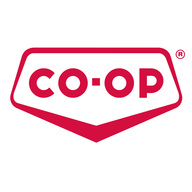
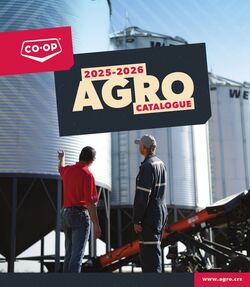

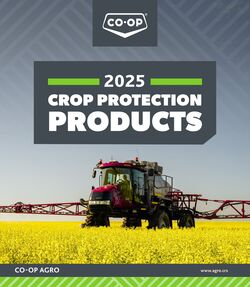







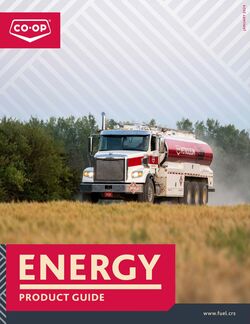

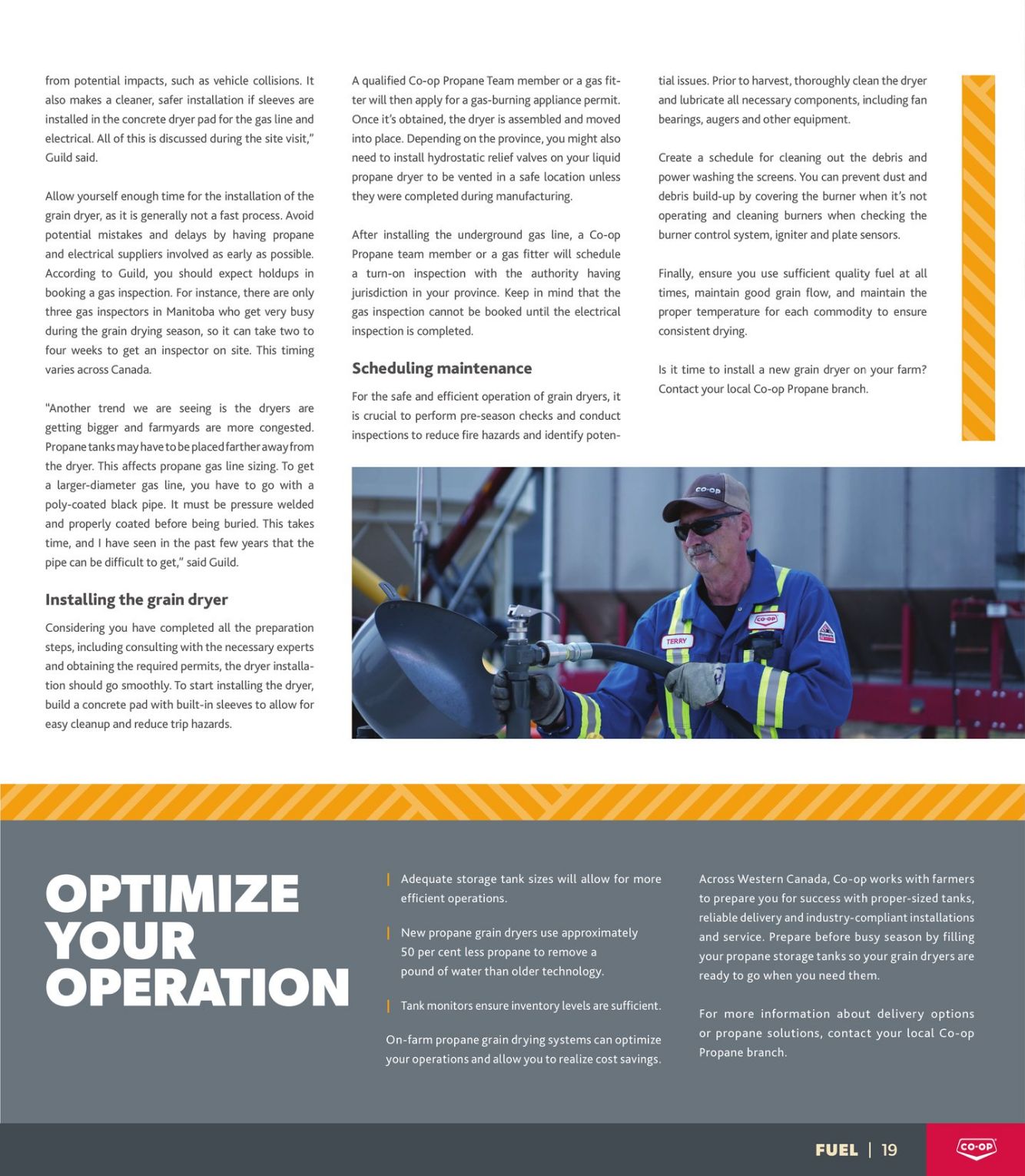
Les produits de cette circulaire
from potential impacts, such as vehicle collisions. It also makes à cleaner, safer installation if sleeves are installed inthe concrete dryer pad for the gas line and electrical. AlL of this is discussed during the site visit" Guild said. Allow yourself enough time for the installation of the grain dryer, as it is generally not a fast process. Avoid potential mistakes and delays by having propane and electrical suppliers involved as early as possible. According to Guild, you should expect holdups in booking a gas inspection. For instance, there are only three gas inspectors in Manitoba who get very busy during the grain drying season, so it can take two to four weeks to get an inspector on site. This timing varies across Canada. “Another trend we are seeing is the dryers are getting bigger and farmyards are more congested Propanetanks may havetobe placed fartherawayfrom the dryer. This affects propane gas line sizing. To get à larger-diameter gas line, you have to go with a poly-coated black pipe. it must be pressure welded and properly coated before being buried. This takes time, and | have seen in the past few years that the pipe can be difficult to get,” said Guild. Installing the grain dryer Considering you have completed all the preparation steps, including consulting with the necessary experts and obtaining the required permits, the dryer installa- tion should go smoothly. To start installing the dryer, build a concrete pad with built-in sleeves to allow for easy cleanup and reduce trip hazards. A qualified Co-op Propane Team member or a gas fit- ter will then apply for a gas-burning appliance permit. Once it's obtained, the dryer is assembled and moved into place. Depending on the province, you might also need to install hydrostatic relief valves on your liquid propane dryer to be vented in a safe location unless they were completed during manufacturing. After installing the underground gas line, à Co-op Propane team member or à gas fitter will schedule a turn-on inspection with the authority having jurisdiction in your province. Keep in mind that the g2s inspection cannot be booked until the electrical inspection is completed. Scheduling maintenance For the safe and efficient operation of grain dryers, it is crucial to perform pre-season checks and conduct inspections to reduce fire hazards and identify poten- til issues. Prior to harvest, thoroughly clean the dryer and lubricate all necessary components, including fan bearings, augers and other equipment. Create a schedule for cleaning out the debris and power washing the screens. You can prevent dust and debris build-up by covering the burner when it's not operating and cleaning burners when checking the burner control system, igniter and plate sensors. Finally, ensure you use sufficient quality fuel at all times, maintain good grain flow, and maintain the proper temperature for each commodity to ensure consistent drying. Îs it time to install a new grain dryer on your farm? Contact your local Co-op Propane branch. Adequate storage tank sizes will allow for more efficient operations. OPTIMIZE Léo OPERATION New propane grain dryers use approximately PE OU El ARC CCC ACC TR CC eee CHE ELEC LS A Cu Tu your operations and allow you to realize cost savings Across Western Canada, Co-op works with farmers CCD CET EN UNE Ce CCC reliable delivery and industry-compliant installations and service. Prepare before busy season by filling Peu EC C CUT CE RNA CCE Cu COTE EEE CURE CUT CU CS A CLE CAE CON CS CCE ed Propane branch FUEL | 19
| Nom | Détails |
|---|